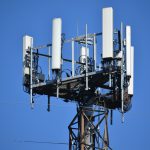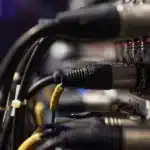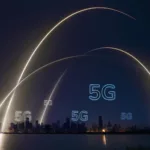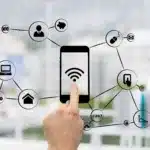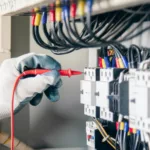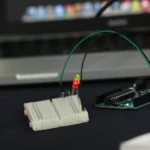
Introduction
In today’s fast-paced technological landscape, sensor electronics have become an integral part of gathering data and information from the physical world. These small devices–capable of detecting and measuring physical properties/changes in their environments, enable applications in industries spanning from healthcare to automotive and from consumer electronics to industrial automation. Recently, there have been significant advancements in bespoke cutting-edge technology, leading to enhanced performance, increased accuracy, and expanded application possibilities. This blog post dives into the era of cutting-edge developments in sensor electronics–shaping the future of technology.
Introduction to Sensor Electronics
Sensor electronics refer to the combination of sensors, which detect physical phenomena, and the associated electronics, which process and transmit the sensor data. Sensors are transducers that convert physical parameters such as temperature, pressure, light, or motion into electrical signals. The integral electronics then amplify, filter, and interpret these signals. Sensor electronics are of great significance due to their pivotal roles in various applications, including consumer electronics, automotive, healthcare, environmental monitoring, aerospace and defense, and industrial automation.
Trends and Advancements in Sensor Electronics: Reshaping the Future and Innovation
Sensor electronics promise to bring exciting developments that are shaping the future of sensor electronic technology, such as:
Miniaturisation and Integration
One of the most significant trends is miniaturisation. Sensors are getting smaller and more energy-efficient–paving the way for greater integration into various devices and systems. Microelectromechanical systems (MEMS) technology, for instance, has created tiny sensors that can be integrated into smartphones, wearables, and even medical implants.
IoT and Connectivity sensor
The Internet of Things (IoT) demands sensors that can collect and transmit data wirelessly to other devices or cloud-based platforms. Sensors equipped with Bluetooth, Wi-Fi, or cellular connectivity are becoming increasingly prevalent. This enables remote monitoring and control of various systems, such as smart homes, industrial machinery, and agricultural equipment.
Advanced Sensing Techniques
Traditional sensors often rely on well-established principles, such as measuring temperature, pressure, or light intensity. However, cutting-edge developments in sensor technology are introducing advanced sensing techniques. For instance:
- Chemical Sensors – Nanotechnology has developed highly sensitive chemical sensors that can detect trace amounts of specific gases or chemicals. These sensors are invaluable in environmental monitoring, industrial safety, and medical diagnostics.
- Biosensors – Biosensors combine biological components, such as enzymes or antibodies, with electronic systems to detect specific biomolecules. They are vital in healthcare for diagnosing diseases, monitoring glucose levels, and more.
- Imaging Sensors – Advancements in imaging sensors have improved the quality and capabilities of cameras in smartphones, surveillance systems, and medical imaging devices. These sensors offer higher resolution, low-light sensitivity, and enhanced image processing.
Artificial Intelligence and Sensor Fusion
Artificial intelligence (AI) is of profound importance in sensor electronics. Machine learning algorithms can analyse data from multiple sensors simultaneously, a technique known as sensor fusion. This approach enhances accuracy and enables more complex applications like autonomous vehicles, where sensors like LiDAR, radar, and cameras work together to perceive the environment.
Energy Harvesting sensor
Powering sensors in remote or energy-constrained environments has been a challenge. However, recent developments in energy harvesting technologies, such as piezoelectric materials and solar cells, have enabled sensors to generate energy from their surroundings. This reduces the need for battery replacements and extends the lifespan of sensor systems.
Quantum Sensor
The realm of quantum sensors is pushing the boundaries of sensitivity and precision. Quantum sensors utilise quantum properties to measure physical quantities with unprecedented accuracy. These sensors are widely found in fields such as gravitational wave detection, navigation, and magnetic field measurements.
Environmental Monitoring and Sustainability
Sensor electronics are increasingly being used for environmental monitoring and sustainability efforts. They help track air quality, water pollution, and climate change indicators, aiding in data-driven decision-making to address environmental challenges.
Final Thoughts
Sensor electronics are evolving rapidly and have opened up new possibilities and advancements in a wide range of applications. These innovations promise to transform industries, enhance the quality of our lives, and contribute to a more sustainable and connected world. As the technology evolves, it is expected to witness even more exciting breakthroughs that will improve efficiency, enhance safety, and promote sustainability across diverse industries and applications.






